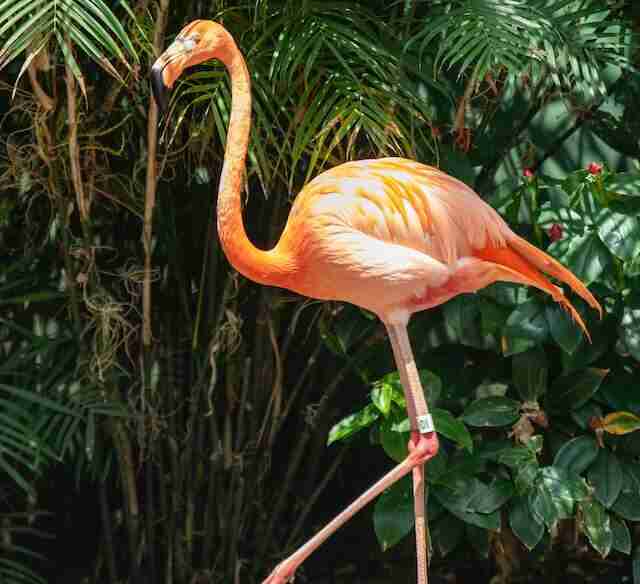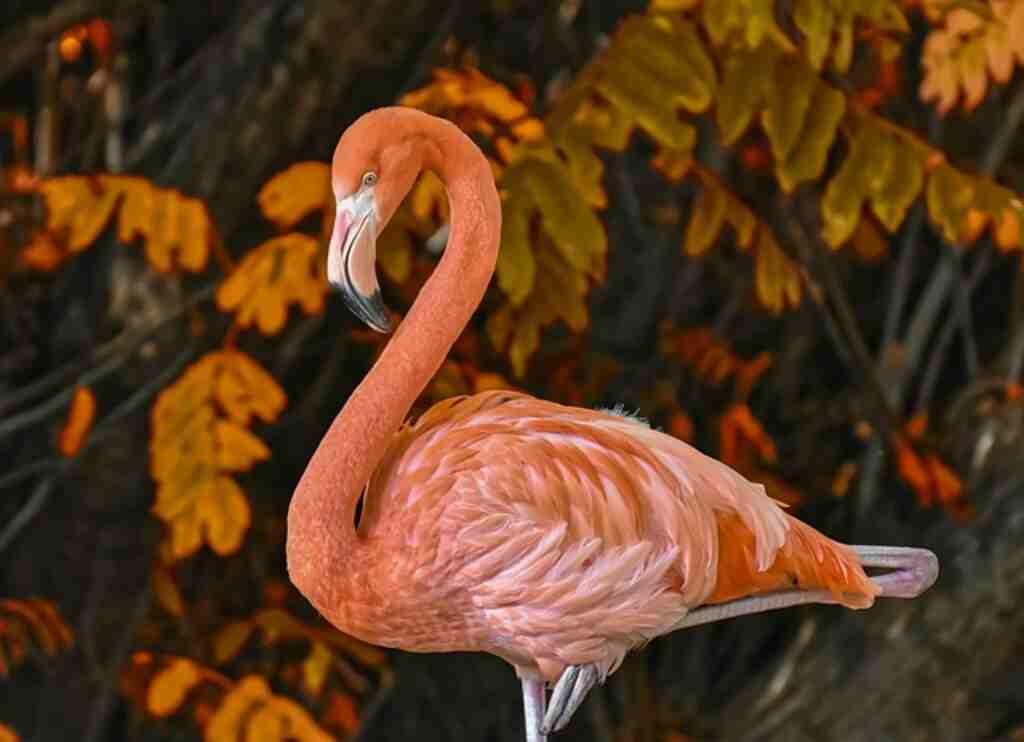As a bird lover, I am fascinated by the unique coloration of Flamingos – one of the most iconic and recognizable species of wildlife on the planet. Flamingos are known for their distinctive pink hue, which has captivated scientists and the general public alike for decades. But have you ever wondered why flamingos are pink?
In this article, we will dive into the science behind the flamingo’s coloration. Through an exploration of their biology, diet, and adaptations, we will gain a deeper understanding of this fascinating phenomenon. So, let’s get started and unravel the mystery of why flamingos are pink.
Table of Contents
- 1 Key Takeaways:
- 2 Why are Flamingos Pink?
- 3 Flamingo Feathers and Their Pink Hue
- 4 The Flamingo Diet and Color
- 5 Adaptations for Pink Color
- 6 Flamingo Color and Breeding
- 7 The Science of Bird Coloration
- 8 Flamingo Habitat and Color
- 9 The Evolution of Flamingo Coloration
- 10 Conclusion
- 11 FAQs
- 11.1 How do flamingo feathers contribute to their pink hue?
- 11.2 What is the connection between the flamingo’s diet and its color?
- 11.3 What adaptations do flamingos have for maintaining their pink color?
- 11.4 How does flamingo coloration relate to their breeding behaviors?
- 11.5 What is the science behind bird coloration and its relation to flamingo’s pink color?
- 11.6 How does the flamingo’s habitat influence its coloration?
- 11.7 What are the evolutionary factors behind flamingo coloration?
- 11.8 What have we learned about flamingo coloration?
- 12 Author
Key Takeaways:
- Flamingos are known for their unique pink coloration.
- The science behind flamingo coloration involves their biology, diet, and adaptations.
- Understanding the mechanisms behind flamingo coloration can deepen our understanding of this species as a whole.
- Flamingo coloration serves both functional and evolutionary purposes.
- There is still much to uncover about the intriguing pink hue of flamingos.

Why are Flamingos Pink?
Flamingos get their distinctive pink coloration from the pigments in their diet, known as carotenoids. Carotenoids, which are found in foods like algae and small crustaceans, are responsible for creating the vibrant pink hue that is synonymous with these elegant birds.
Flamingo Feathers and Their Pink Hue
One of the most distinctive features of flamingos is their vibrant pink feathers, which are unlike any other bird species. Their unique pigmentation process is what gives them their stunning plumage color and is a topic of great fascination for scientists.
The main contributing factor to the pink hue of flamingo feathers is the presence of natural pigments called carotenoids. These pigments are obtained from the shrimp and algae that flamingos consume as part of their diet and are responsible for creating the pink color in their feathers.
Interestingly, the intensity of the pink color in flamingo feathers can vary depending on the individual flamingo and their diet. Flamingos that consume a diet rich in carotenoids will have more vibrant pink feathers, while those with a less carotenoid-rich diet will have lighter, more pastel-colored feathers.
Another factor that contributes to the color of flamingo feathers is the bird’s pigmentation process. Flamingos have unique cellular structures called “spongy medullary keratin” in their feathers that allow for the deposition of the pink pigments. This process helps to create the distinct, gradient bands of color seen on flamingo feathers.
“The main contributing factor to the pink hue of flamingo feathers is the presence of natural pigments called carotenoids.”
In summary, the pink feathers of flamingos are the result of a complex interplay between their diet, pigmentation process, and unique cellular structures. The natural pigments obtained through their diet and the way their feathers are structured are what give flamingos their iconic, eye-catching pink hue.
The Flamingo Diet and Color
Flamingos’ unique pink coloration is closely tied to their diet. Specifically, it is the result of their consumption of carotenoid-rich foods, such as algae and crustaceans. Carotenoids are natural pigments found in these foods, and they are absorbed by the flamingos’ feathers and skin, resulting in the characteristic pink hue.
The more carotenoids a flamingo consumes, the more vibrantly pink its feathers will be. This is why flamingos in certain regions, such as the Caribbean, are often more brightly colored than their counterparts in other regions with less carotenoid-rich diets.
Interestingly, the exact shade of pink can also indicate the general health of a flamingo. The more efficiently a flamingo is able to process carotenoids, the brighter its feathers will be. This means that a pale or dull pink color could signal a poor diet or health issues.
The importance of their diet in creating their coloration means that flamingos are incredibly adaptable when it comes to finding sources of carotenoids. In fact, they have been known to adjust their feeding habits and migrate to different areas in search of the most nutritious food sources.
Overall, the connection between flamingo diet and color highlights the complex biological processes at play in the creation of their unique appearance.

Adaptations for Pink Color
The pink coloration of flamingos is a result of their unique adaptations. One of the most notable adaptations is their diet, which is responsible for the high levels of carotenoids, the natural pigments that give flamingos their distinct pink hue.
Flamingos are filter feeders, using their specialized beaks to sift through mud and water to find tiny organisms such as algae, crustaceans, and small fish. Their diet is rich in carotenoids, which are found in the pigments of these organisms.
Once ingested, the carotenoids are broken down and distributed throughout the flamingo’s body, including their feathers. The high levels of carotenoids in their diet, combined with the unique structure of their feathers, allow flamingos to absorb and retain these pigments, resulting in their vibrant pink coloration.
Structural Adaptations for Pink Color
In addition to their specialized diet, flamingos also have structural adaptations that contribute to their pink coloration. Their feathers contain a network of microscopic air pockets that refract light, enhancing the brightness of their pink hue. Furthermore, their feathers are densely packed and have a unique shape, which helps to trap air and increase insulation, keeping flamingos warm in cool environments.
Another adaptation is the presence of specialized oil glands located near the base of their tail feathers. These glands produce a thick, waxy oil that flamingos spread across their feathers during preening. The oil not only helps to waterproof the feathers but also contains pigments that contribute to their pink coloration.
Overall, the adaptations of flamingos are key to maintaining their distinctive pink hue. Their specialized diet, feather structure, and oil gland secretion all work in tandem to produce one of the most striking colorations in the animal kingdom.
Flamingo Color and Breeding
When it comes to flamingo color, there is a direct connection to their breeding behaviors. With their vibrant hues, these birds use their coloration as a way of attracting mates and determining reproductive success. This is particularly true with the male birds, who will showcase their brighter feathers in attempts to impress the females.
Interestingly, flamingos are not born with their characteristic pink hue. Instead, they are born with gray feathers, which gradually turn pink as they age. In fact, for the first few weeks of their lives, flamingo chicks do not even produce the pigments that give their feathers their pink coloration. Instead, they rely on a special secretion from their parents to help them develop their pink hues.
As they reach maturity, flamingos will undergo a process known as a “color change.” During this time, their feathers will transition from a pale pink to a deeper, more vibrant shade. The timing and intensity of this color change is directly related to their breeding behaviors. Research has shown that birds with brighter feathers are more successful in attracting mates and producing offspring, demonstrating the evolutionary significance of their coloration.
Interestingly, the exact mechanisms behind the flamingo’s color change are not yet fully understood. It is believed that hormonal changes and shifts in diet may play a role in this process, but more research is needed to fully unravel the mystery.
The Science of Bird Coloration
The science behind bird coloration has always fascinated me. The pink hue of flamingos is just one example of how bird colors can serve both functional and evolutionary purposes.
The coloration of birds is a complex field of study, with numerous theories and factors influencing the pigmentation process. One of the primary factors is genetics, as different bird species have unique genetic codes that determine the colors of their feathers.
However, genes alone are not enough to create the vibrant coloration we see in birds. The role of diet and environmental factors cannot be underestimated. For example, the consumption of carotenoid-rich foods is essential in creating the pink coloration of flamingos.
Another interesting aspect of bird coloration is the role of sexual selection and mate attraction. Many bird species have evolved bright and bold colors to attract mates and signal their reproductive fitness. In the case of flamingos, their pink hues serve as a visual cue for potential mates, indicating their health and ability to secure resources.
Ultimately, the study of bird coloration provides valuable insights into the complex and fascinating world of avian biology. By examining the unique coloration of flamingos, we can gain a deeper understanding of the biological adaptations that contribute to their survival and evolution.

Flamingo Habitat and Color
The environment in which flamingos live plays a significant role in their coloration. Flamingos are found in a variety of habitats, including shallow lakes, lagoons, and mudflats. These areas are ideal for flamingos to thrive, as they provide ample opportunities for feeding and breeding.
However, the quality of water in these habitats can have a direct impact on the flamingo’s coloration. Healthy, nutrient-rich waters can provide the flamingos with the necessary carotenoids they need to maintain their vibrant coloration. On the other hand, poorly maintained water sources can lead to a lack of food and nutrients, causing the flamingos to lose their color and appear pale or white.
Additionally, the presence of certain microorganisms in the water can also contribute to the flamingo’s coloration. For example, certain algae and bacteria produce pigments that can be absorbed by flamingos during feeding, making their coloration even more vibrant.
The Role of Light
The amount and quality of sunlight also play a significant role in flamingo coloration. The pink pigment in the flamingo’s feather is created by the reflection and absorption of certain wavelengths of light by the carotenoid pigments in their feathers. The more light that is reflected and absorbed, the brighter and more vibrant the flamingo’s coloration appears.
Flamingos are most active during the daytime when the sun is at its highest point in the sky. During this time, the sunlight is at the optimal angle for reflecting off of their feathers, making their coloration appear even more brilliant.
Adaptations to Habitat
Over time, flamingos have adapted to their habitat in various ways to make the most of their unique coloration. For example, during the breeding season, flamingos will gather in large groups to create a spectacle of pink color. This serves to attract potential mates and increase the chances of successful breeding.
Flamingos have also been known to use their coloration as a form of camouflage. When nesting, flamingos will often use mud or other materials to build their nests, incorporating the surrounding colors to blend in with their environment and avoid detection from predators.
Overall, the flamingo’s coloration is a crucial part of its survival, and the surrounding habitat plays a vital role in maintaining their unique pink hue.
The Evolution of Flamingo Coloration
As we have explored in previous sections, the pink coloration of flamingos serves both functional and evolutionary purposes. But how did this unique coloration evolve over time?
One theory is that the flamingo’s pink coloration is a result of sexual selection. Male flamingos with brighter and more vibrant hues may be more attractive to female mates, leading to a higher reproductive success rate. Over time, this could have contributed to the evolution of more vibrant coloration in flamingos.
Another possibility is that the pink coloration serves a functional purpose in helping flamingos to regulate their body temperature. The dark pigments in their feathers absorb heat from the sun, while the white feathers reflect it. The resulting balance of heat absorption and reflection helps to keep flamingos cool in their hot, sunny habitats.
Interestingly, the pink coloration of flamingos is not unique to this species. Other birds, such as spoonbills and certain ibis species, also exhibit pink hues. This suggests that there may be a shared evolutionary history behind the development of pink coloration in certain bird species.
Overall, the evolution of flamingo coloration is a complex topic that requires further research and investigation. However, it is clear that their distinctive pink coloration is a key aspect of their biology and adaptation to their environment, making them one of the most fascinating species in the animal kingdom.
Conclusion
In conclusion, the pink coloration of flamingos is a fascinating subject that has captured the attention of scientists and nature enthusiasts alike. Through our exploration of the biology, diet, and adaptations of flamingos, we have gained a deeper understanding of the mechanisms behind their distinctive hue.
The pink feathers of flamingos result from the pigmentation process in their feathers, which is driven by natural pigments they acquire from their diet, mainly from consuming carotenoid-rich foods. Their unique adaptations enable them to maintain their vibrant coloration and survive in their natural habitat.
Flamingos’ color also plays a significant role in their breeding behaviors, where their pink hues attract potential mates and determine reproductive success. Therefore, it is an essential aspect of their survival and evolution as a species.
Through our investigation of flamingo coloration, we have gained a broader understanding of bird coloration science in general. The study of coloration provides insight into the adaptations and evolution of wildlife, making it an exciting area of research.
The pink coloration of flamingos is not only functional but also beautiful, making them one of nature’s most captivating wonders. We hope that our exploration of this topic has sparked your curiosity and appreciation for these incredible birds.
FAQs
How do flamingo feathers contribute to their pink hue?
Flamingo feathers contain pigments that give them their pink color. These pigments are created through a process called biochromatic coloration, where enzymes in the flamingo’s body break down the carotenoids from their diet and deposit them into the growing feathers.
What is the connection between the flamingo’s diet and its color?
The flamingo’s diet plays a crucial role in their coloration. Their consumption of carotenoid-rich foods, such as shrimp and algae, provides the necessary pigments for their vibrant pink feathers. Without these carotenoids, flamingos would not have their distinctive pink hue.
What adaptations do flamingos have for maintaining their pink color?
Flamingos have specialized adaptations that help them maintain their pink color. These include unique enzymes in their digestive system that efficiently extract and absorb carotenoids from their food, as well as filtering structures in their bills that allow them to selectively feed on their preferred diet.
How does flamingo coloration relate to their breeding behaviors?
Flamingo coloration plays a role in attracting mates and determining reproductive success. The intensity and brightness of a flamingo’s color can indicate its overall health and fitness, making it an important factor in mate selection. Additionally, color changes may occur during the breeding season to further enhance their courtship displays.
What is the science behind bird coloration and its relation to flamingo’s pink color?
The science of bird coloration involves understanding the mechanisms behind the pigments responsible for their hues. In the case of flamingos, their pink coloration is achieved through the presence of carotenoid pigments in their feathers. Studying bird coloration helps us better understand the diverse adaptations and evolutionary processes that shape the natural world.
How does the flamingo’s habitat influence its coloration?
Flamingos’ surrounding environment can impact their coloration. The availability of carotenoid-rich foods in their habitat, such as salt pans and saline lakes, directly affects the pigments they consume and, consequently, their pink coloration. The combination of suitable food sources and optimal environmental conditions contributes to their vibrant hues.
What are the evolutionary factors behind flamingo coloration?
The pink coloration of flamingos has evolved over time due to various factors. It is believed that their coloration serves as both a form of camouflage in their habitat and a signal of health and reproductive fitness to potential mates. Natural selection and genetic adaptations have played a role in shaping their distinctive pink hue.
What have we learned about flamingo coloration?
Through our exploration of flamingo coloration, we have discovered that their pink hue is a result of the pigments found in their diet, particularly carotenoids. Flamingo feathers and their unique adaptations allow them to maintain their vibrant color. Their coloration is related to their diet, breeding behaviors, and evolutionary history. Overall, flamingo coloration is a fascinating example of the intricate connections between biology, behavior, and the natural world.




